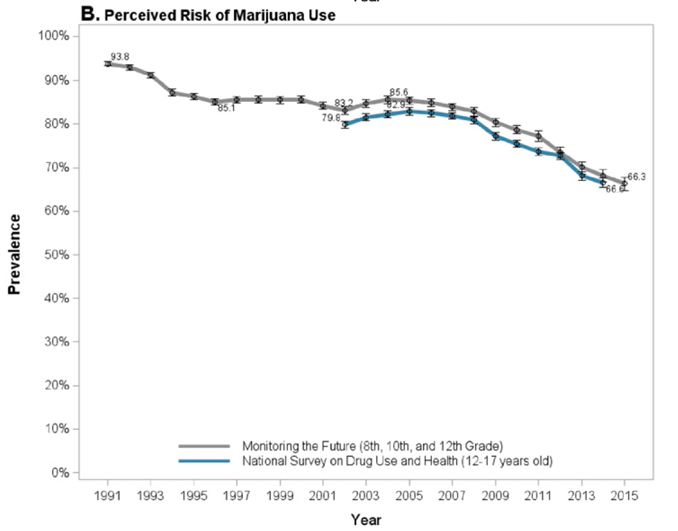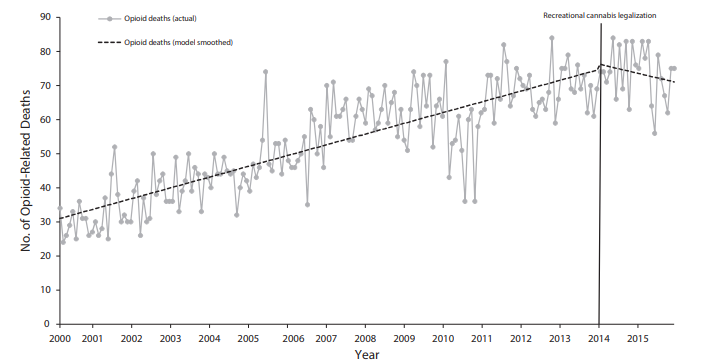Executive Summary
In the US, cannabis was declared legal in 33 states within the last several years. This allows people to carry and use the substance without fear of criminal responsibility for such actions. However, research suggests that a more in-depth examination of this policy is required, that will help educate both citizens and medical professionals in particular about the implications of cannabis on one’s health. This is because while moderate use is proven not harmful, abuse of marijuana can lead to severe impairment of cognitive and physical abilities.
Context or Scope of Problem
The problem of drug usage and illegal trafficking has been affecting the US for years. Discussions about cannabis and its legalization within the state have been prolonged and resulted in several states declaring the use of marijuana legal. The current approach of the government differs from state to state, and only 33 people can legally access marihuana. Schauer et al. state that the government is making a lot of efforts towards legalization that should improve the perception of the drug and reduce the levels of addictions to other dangerous substances (1). However, little research was made to describe different patterns of use and implications for health. Therefore, while the policy introduced by the US officials is useful, more effort should be directed at ensuring that the laws do not encourage abuse of marijuana use.
The current policies are aimed at receiving tax revenue by providing access to this drug, which causes less harm when compared to others and in some cases can benefit individuals. Due to these policy changes, the consumption of this drug has risen and will continue to increase due to accessibility and low market price. Carliner et al. state that “while some can use cannabis without harm, others experience adverse consequences” (13).
Moreover, the authors suggest that after the legalization, the number of use disorders cases in the country increased, indicating a perspective problem. One aspect of this issue is the perceived risk of cannabis use, which has decreased significantly since 2002 and can be seen in Graph 1. This can lead to a significant risk of overdose and cannabis-related disorders due to a lack of proper knowledge about this substance.

In addition, the laws allow one to have virtually unlimited access to cannabis. Van Ours and Williams state that while marijuana does not have a harmful effect on a person’s well-being if moderately used, individuals who use large doses of this drug have an impaired mental and physical well-being (993). This information, together with the governmental efforts to legalize marijuana presents implications for a need to extend educational initiatives that will allow providing information about the prospective dangers of this drug to the public.
Policy Alternatives
Current policies that the US government implements target the legalization of cannabis use, which allows to production and sell the substance. Livingston et al. argue that this approach helps reduce the number of substance abuse cases, for instance, opioids (1827). The data provided by the authors suggests that within two years after the implementation of these policies, the number of death caused by an overdose of opioids in Chicago reduced by 2%, which is demonstrated in Graph 2. Therefore, this policy brief does not argue that the current legal action target towards legalization is wrong because it has positive effects on the population health. However, it is evident that more public attention should be drawn to prospective risks.

Education is among the most critical components that help minimize the risk of drug abuse and addiction. Therefore, apart from developing legislation that allows individuals to use cannabis, the government should dedicate attention to ensuring that the public understands the possible dangers. Ware and Ziemianski argue that this is especially vital for medical professionals because currently, they are not receiving enough information about marihuana and its possible side effects, which obstructs them from providing care to patients (548). It is because the issue of substance abuse is a serious health concern and should be addressed by appropriate governmental policies.
Policy Recommendations
Firstly, the government should provide investment for research and data collection, which will help understand the patterns of marijuana use among different populations. This step is necessary because it is evident that the number of current studies addressing this policy problem is scarce and does not provide a sufficient amount of data. Based on this information, one can create a policy that addresses the education of both healthcare professionals and the population, including the appropriate dosage, side effects, and risks, as well as treatment plans. The curriculum of medical trainees should include compulsory education about the effects of cannabis.
Secondly, the policy should encourage companies that produce and sell cannabis to provide more information about prospective dangers to their customers. This can be done through the warning signs on the packaging. Finally, social campaigns targeting the issue and distributed via the internet or traditional media should be a part of this educational policy. In this way, the government will be able to ensure that the population’s perceived risk levels are consistent with the actual data regarding side effects and complications of marijuana abuse.
Works Cited
Carliner, Hannah et al. “Cannabis Use, Attitudes, and Legal Status in The U.S.: A Review.” Preventive Medicine, vol. 104, 2017, pp. 13-23.
Livingston, Melvin et al. “Recreational Cannabis Legalization and Opioid-Related Deaths in Colorado, 2000-2015.” American Journal of Public Health, vol. 107, no. 11, 2017, pp. 1827-1829.
Schauer, Gillian, et al. “Toking, Vaping, and Eating for Health or Fun.” American Journal of preventative Medicine, vol. 50, no. 1, 2016, pp. 1-8.
Van Ours, Jan, and Jenny Williams. “Cannabis Use and Its Effects on Health, Education, and Labor Market Success.” Journal of Economic Surveys, vol. 29, no. 5, 2015, pp. 993–1010.
Ware, Mark, and Daniel Ziemianski. “Medical Education on Cannabis and Cannabinoids: Perspectives, Challenges, and Opportunities.” Clinical Pharmacology & Therapeutics, vol. 97, no. 6, 2015, pp. 548–550.